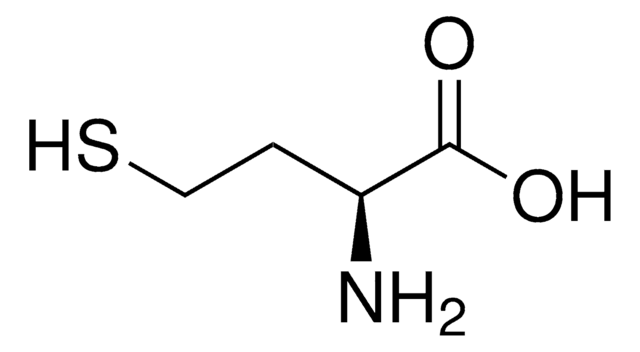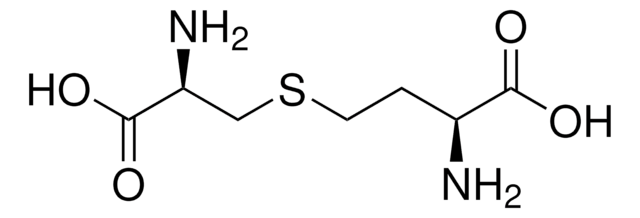Wichtige Dokumente
73097
L-Argininbernsteinsäure Lithiumsalz
≥95% (TLC)
Synonym(e):
N-{{[(4S)-4-Amino-4-carboxybutyl]amino}-iminomethyl}-L-asparaginsäure Lithiumsalz, Lithium-L-argininosuccinat
About This Item
Empfohlene Produkte
Qualitätsniveau
Assay
≥70% (qNMR)
≥95% (TLC)
Form
powder or crystals
Optische Aktivität
[α]/D 15±2°, c = 1 in H2O
Verunreinigungen
≤20% water
Farbe
white to off-white
Lagertemp.
2-8°C
SMILES String
OC(C[C@@H](C(O)=O)NC(NCCC[C@H](N)C(O)=O)=N)=O.[Li+]
InChI
1S/C10H18N4O6.Li/c11-5(8(17)18)2-1-3-13-10(12)14-6(9(19)20)4-7(15)16;/h5-6H,1-4,11H2,(H,15,16)(H,17,18)(H,19,20)(H3,12,13,14);/q;+1/t5-,6-;/m0./s1
InChIKey
MGJRREWOOITZBB-GEMLJDPKSA-N
Suchen Sie nach ähnlichen Produkten? Aufrufen Leitfaden zum Produktvergleich
Biochem./physiol. Wirkung
Lagerklassenschlüssel
11 - Combustible Solids
WGK
WGK 3
Hier finden Sie alle aktuellen Versionen:
Besitzen Sie dieses Produkt bereits?
In der Dokumentenbibliothek finden Sie die Dokumentation zu den Produkten, die Sie kürzlich erworben haben.
Kunden haben sich ebenfalls angesehen
Unser Team von Wissenschaftlern verfügt über Erfahrung in allen Forschungsbereichen einschließlich Life Science, Materialwissenschaften, chemischer Synthese, Chromatographie, Analytik und vielen mehr..
Setzen Sie sich mit dem technischen Dienst in Verbindung.











